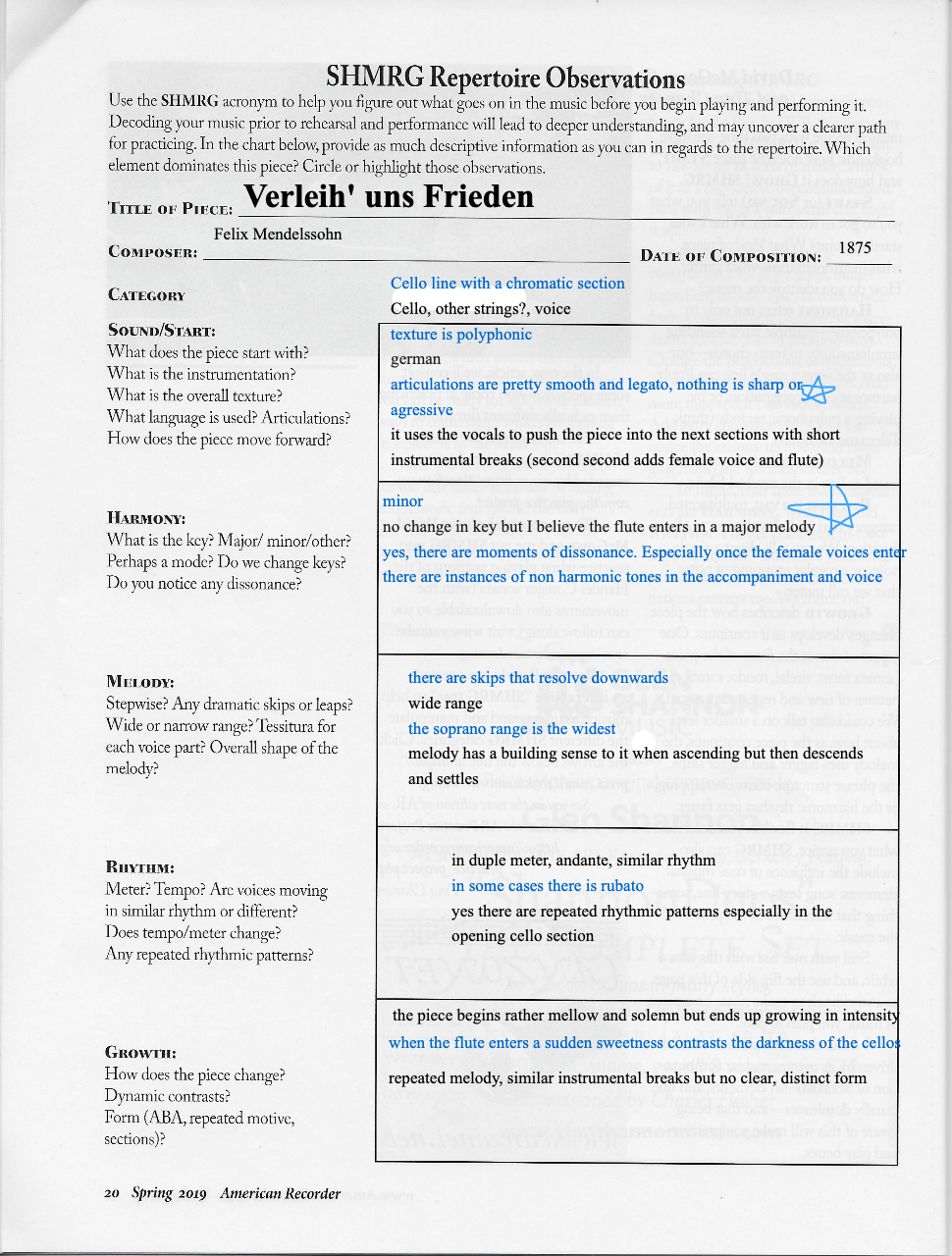Romantic Music Overview
Step 1
-
Share your overall impression of Romantic Period Music.
- I love the increased variety of timbre and dynamics. The sudden ff in Fingals Cave were just bone-chilling. At the beginning of Slavonic Dances I was JOLTED awake (and yanked my headphones out until I turned the volume down). But thankfully it had times that were more subtle and sweet to give the listeners ears a break. I then had to turn my volume back up to fully enjoy the subtle beauties of Song without Words. Each were so different but just as intense (just in different emotional territories).
-
How does this music sound similar to Classical Music?
- The simplicity on Song without Words definitely resemble Classical Music's desire to please. Also, the sense of form in Slavonic Dances was Classical-like.
-
How does this music sound different from Classical Music?
- If you took classical music and pumped it full of passion and intent, you'd get Romantic. Everything has more to it. More purpose, more emotional depth, and more of a drive to every song. However, Classical music wasn't devoid of these things.
Step 2
(Musical Elements; Pitch, Rhythm, Dynamics, Tempo, Texture, Timbre, Form, Purpose, Harmony, Melody, Expression, Mood, Language, Style, etc.)
Arpeggios for forwards movement
rubato
no change in timbre (just piano)
building dynamics
that note that hung in the air before the crazy run (pitch, purpose, expression)
pulsing (the way the arpeggios pulse)
the high pitched chords coasting on top of the crazy stuff underneath! amazing sense of forwards motion leading to the flowing chromatic sclae (down, up, back down) landing in the original theme
mostly homophonic and polyphonic, small moments of monophonic
Step 3
bright
sweet
shrill
oboe!!! smooth and mesmerizing <3
flute was on the shrill side
cellos were dark and rumbly
brass was honky (so honky at the end)
violins get smoother
horns are smooth and dark towards the end
Step 4
-
Provide a text translation for this excerpt
-
Gloom of woods, refreshing coolness, thee a thousand times I greet;
when I quit the throng of folly, oh ’tis then thy rest is sweet!
’Mid the moss in soft recesses, dreamily I lie;
there no care the heart oppresses, all my fears and troubles fly.
Distant voices, far resounding, wake the heart to sweet unrest;
while I breathe the fragrant stillness, ’mid these shadows I am blest.
World, thou canst not here assail me with thy fever’d pain,
where the pine sheds odours balmy peace and holy silence reign.
Here beneath the swaying branches ev’ry murmur breathes repose,
while the breeze with noiseless pinion many a balmy blossom throws.
Sing, ye birds, your tender ditties, lull the weary past;
haunts of men and busy cities, oh farewell, I rest at last.
-
Is this an example of a miniature or grandiose composition?
- miniature
Step 5
(Musical Elements; Pitch, Rhythm, Dynamics, Tempo, Texture, Timbre, Form, Purpose, Harmony, Melody, Expression, Mood, Language, Style, etc.)
starts monophonic with a brassy timbre, then harmonized
goes very bright
back and forth light--> heavy in texture
A B A C A etc.
steady (march) tempo and grand mood
rather high in pitch
rhythmic patterns keep coming back (and nothing weird or incongruent occurs)
Purpose? For weddings of course! Its a celebratory piece with a sweet, slow section at the end that is rather romantic
Step 6
-
What is a nocturne?
- a romantic/dreamy piano piece, usually quite short
-
Describe characteristics of Romantic music conveyed in this piece
- rubato!
- ornamentals used in this context (for emotional effect)
- the underlying chords "keeping time"
- swells
- sudden ff
- chromaticism (or at least sections using it)
-
that high pitched sixteenth thing in the right hand that descended and resolved!!!
- I just liked this
Step 7
1. Verleih uns FriedenLinks to an external site. by F. Mendelssohn

 icons at the top right corner of the subsection.
icons at the top right corner of the subsection.